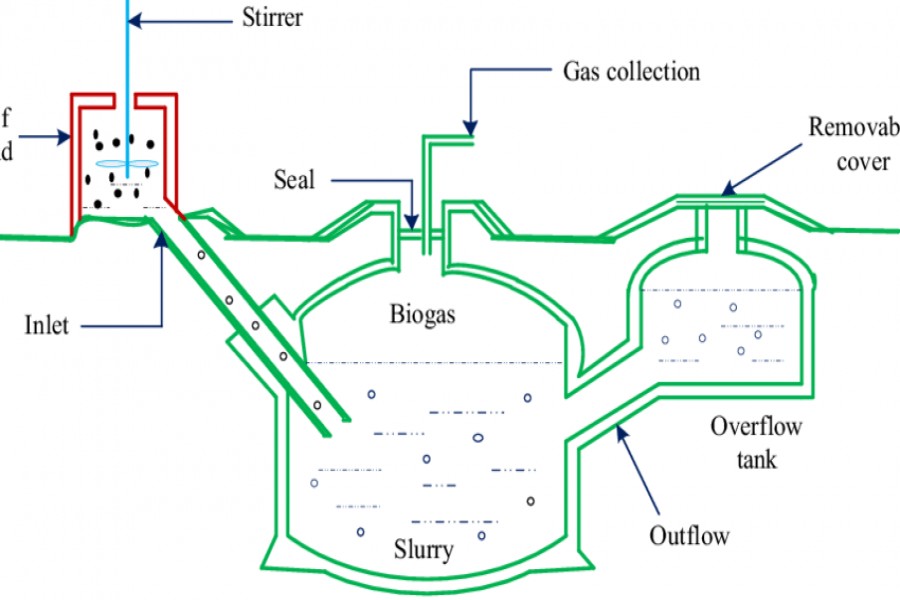Biogas, an alternative to conventional fuel oil or wood, is being increasingly used in Bangladesh. It is being used for cooking and other household purposes in mostly rural areas of the country. The consumers are now using it in place of wood and other fuels because it is cost-effective and environment-friendly.
The residue left after gas extraction is good organic manure free from harmful germs and pathogens. Cattle dung, poultry droppings and garbage are processed in the biogas plants under anaerobic conditions to produce biogas. Most of the biogas plants in the country were set up to process cattle dung.
Seven or eight cows are required for a plant. The dung is mixed with water in equal ratio and stored in a tank. After 10-12 days, biogas is produced in the plant and is supplied to the ovens through plastic pipes. A family of 5-6 members can easily cook their food and light lamps in their houses with one plant.
About 70 per cent of the gas is methane, which is better as fuel than firewood and the remaining gas is carbon-dioxide. The biogas, supplied from the plant to the kitchen, is used to run a two burner cooker where the gas burns with clean blue flame free of smoke or ash, much the same way a Dhaka city household burns what is called Titas gas.
A plant with production capacity of 100 cubic feet (cft) is sufficient for daily cooking of a family consisting of 7-10 members. Besides cooking, light, fan, radio and television can be operated with biogas. For the operation of a plant 60-70 kilograms of cow-dung or 40-50 kilograms of excreta of poultry birds are required.
Experts say use of biogas can reduce dependency on natural gas and firewood, saving forests and increasing soil fertility. Poor people can save their hard earned money by using biogas as they need not purchase firewood for cooking or kerosene for lighting.
In spite of being very insignificant in volume, the availability of biogas to a very large number of rural people and remote areas make the technology very suitable and effective.
Gas supply to the vast multitude of the rural people is practically impossible for two reasons: one, it is not possible to build gas pipeline infrastructure to connect thousands of villages throughout the country, and two, even if it is possible, the rural population would not have the purchasing power to use pipeline gas in their households. Such a situation leaves the rural population to rely on traditional biomass fuel sources for household supply of energy.
Over the last few decades there have been renewed interests and initiatives by many developing countries to innovate new and improved biomass energy technologies whereby the biomass energy sources can be used more efficiently and managed more scientifically.
The most popular and widely used of these technologies has been the biogas technology in which biomass (cow dung, poultry dropping, agricultural residue etc) is converted into biogas. Considering the level of interest among the rural people and the benefit this could bring to individual household, there should be more assistance from the government and non-government organisations for these projects.
On all counts, use of biogas technology is expected to bring about benefits to the environment and the people. It certainly upgrades an age-old inefficient and poor energy use practice into a more efficient and scientific one.


